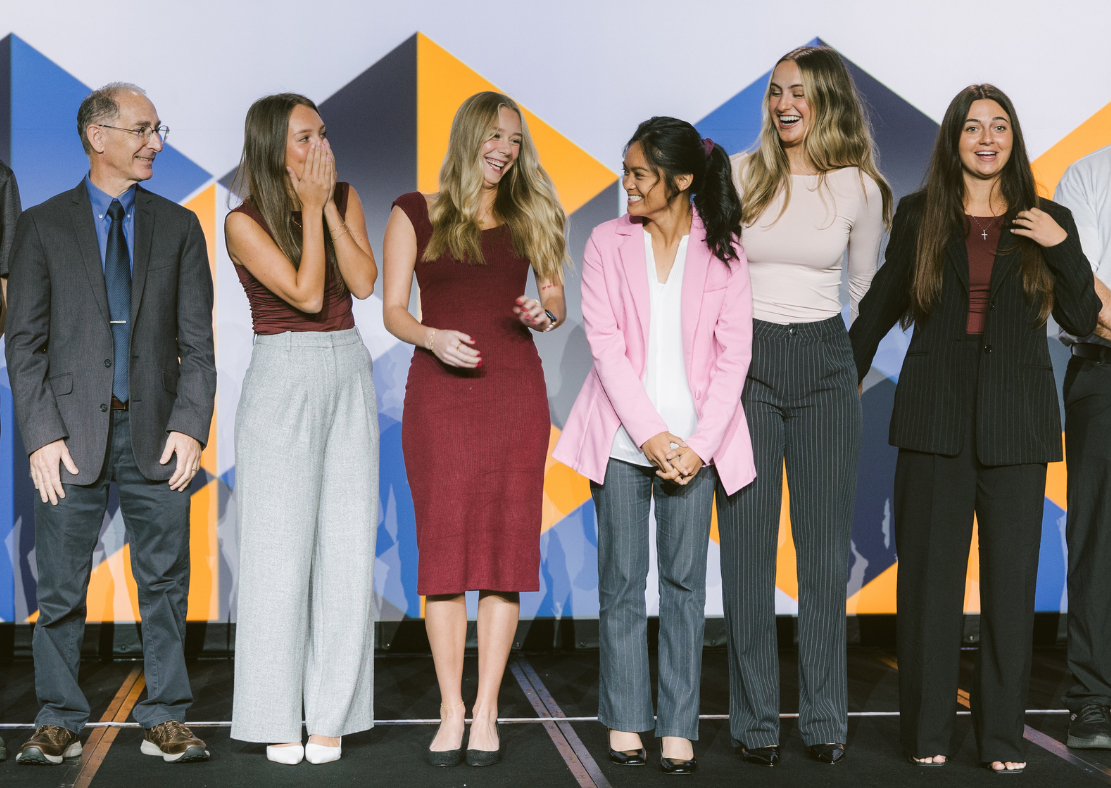
“Oh, wow, look! That team is all women,” whispered an audience member during the introductions of the finalists for DBIA’s 2024 National Design-Build Student Competition.
Another leaned over and replied, “I just noticed that, too! It’d be cool if they won.”
Moments later, the murmurs turned to cheers as DBIA Executive Director and CEO Lisa Washington, CAE, announced, “And the winner is Cardinal Design-Build!” Applause erupted as the spotlight shone on the young women from the University of Arizona (U of A), standing shoulder to shoulder.
The moment was extraordinary — not just for the team but for the AEC industry as a whole, where women make up just 10% of the construction workforce in the U.S. For Cardinal Design-Build, this wasn’t merely a win; it was a statement of ingenuity and resilience in a field where women have historically been underrepresented.
The team — Macie Balkan, Kenadee Carruthers, team captain Reuel Florendo, Lauren Johnson and Lily Trenkamp — brought together their expertise in civil and architectural engineering to craft a winning proposal that stood out for its innovation, cost analysis and seamless integration of design-build principles. Guided by their faculty advisor, Dean Papajohn, a professor of practice in civil and architectural engineering and mechanics at U of A, the team demonstrated a mastery of collaboration and creativity that left a lasting impression on the judges.
Arizona’s standout performance was bolstered by Johnson, who earned the Best Individual Presenter Award for her poised and engaging delivery, impressing judges with her ability to articulate the team’s vision clearly and confidently.


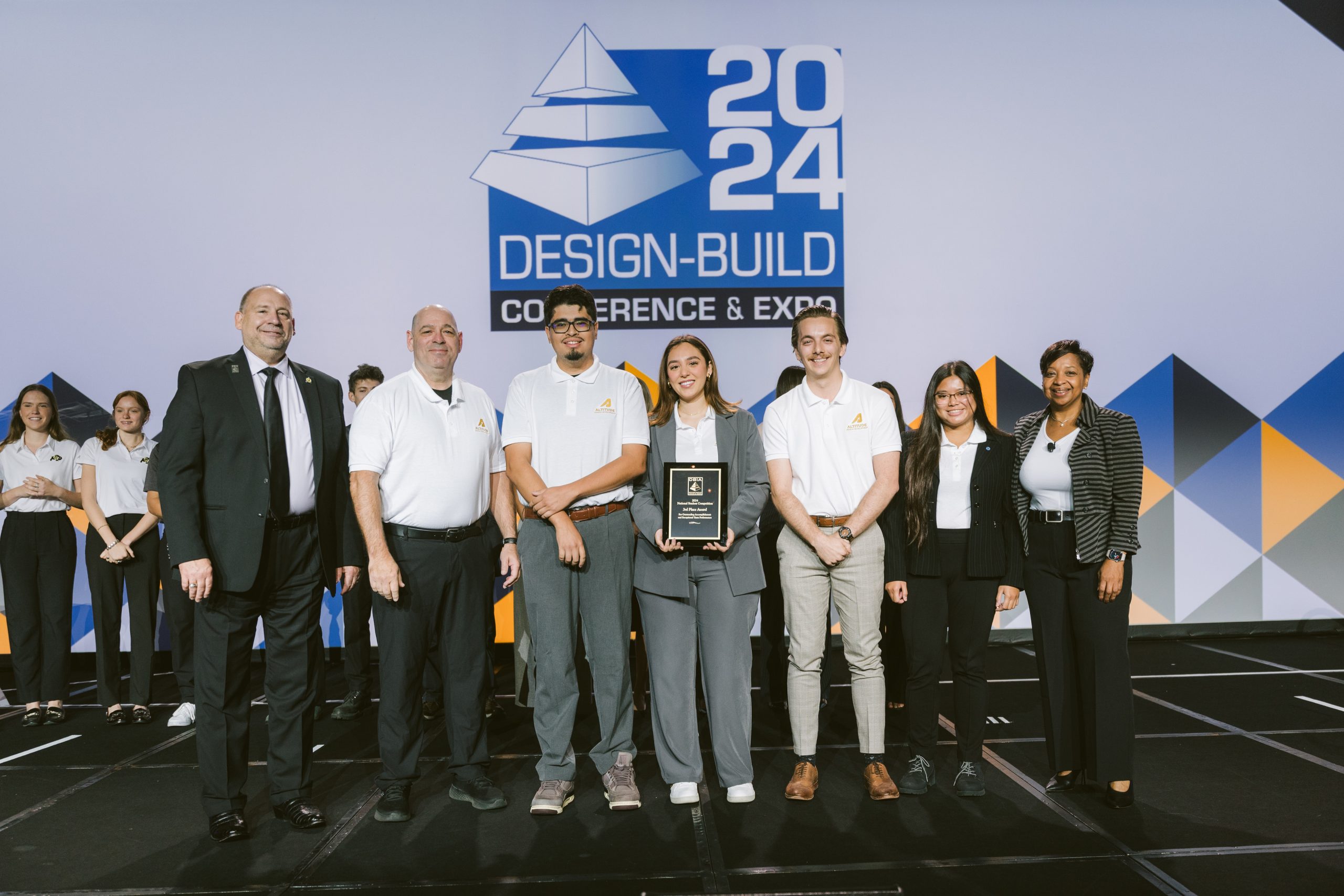

The Competition: A Test of Real-World Expertise
The DBIA National Design-Build Student Competition provides a rigorous introduction to the complexities of real-world project delivery. In 2024, 30 teams from 22 colleges and universities across the nation entered the competition, each tasked with solving a real-world-inspired challenge using design-build. After submitting initial responses to a Request for Qualifications (RFQ), only eight regional winners advanced to the second phase in which they responded to a Request for Proposals (RFP). The final three teams — Cardinal Design-Build from the University of Arizona, Rocky Mountain Design-Build from the University of Colorado Boulder and Altitude Design Development from the NewSchool of Architecture and Design — presented their proposals live to a panel of national industry judges at DBIA’s Design-Build Conference & Expo in Dallas, Texas, earlier this month.
“This competition is more than an academic exercise — it’s a chance for students to step into the world of design-build professionals,” said Washington. “It’s an invaluable opportunity for them to demonstrate their creativity and collaboration in high-pressure, real-world conditions.”
The 2024 competition’s challenge, sponsored by Parsons Corporation, centered on a high-profile project to address record-breaking increases in passenger traffic by expanding a major international airport. Students were tasked with developing a solution for the initial phase of this world-class terminal expansion, which included designing the terminal and airside expansion, along with an automated people mover (APM). While students were responsible for this first phase, they were also provided with the broader vision for the full expansion, which would eventually include additional ticketing and baggage areas, new security screening lanes and other facilities. This comprehensive view was meant to highlight the long-term planning required for such a project, even though students were focused solely on this first phase. The project reflected a $100 million fixed price variable scope for the initial phase, blending commercial, aviation, civil and transportation design elements into a cohesive design-build proposal.
“We tried a totally new concept this year,” said Bill Hasbrook, MEMS, TCFM, FDBIA, Student/Academic Engagement Liaison for DBIA. “Instead of just a commercial building focus as we’ve had in years past, we added a transportation and heavy/civil aspect to the competition by incorporating a new terminal and all the ancillary pieces into an existing airport –– gates, apron, tarmac, concessions, people mover and more.”
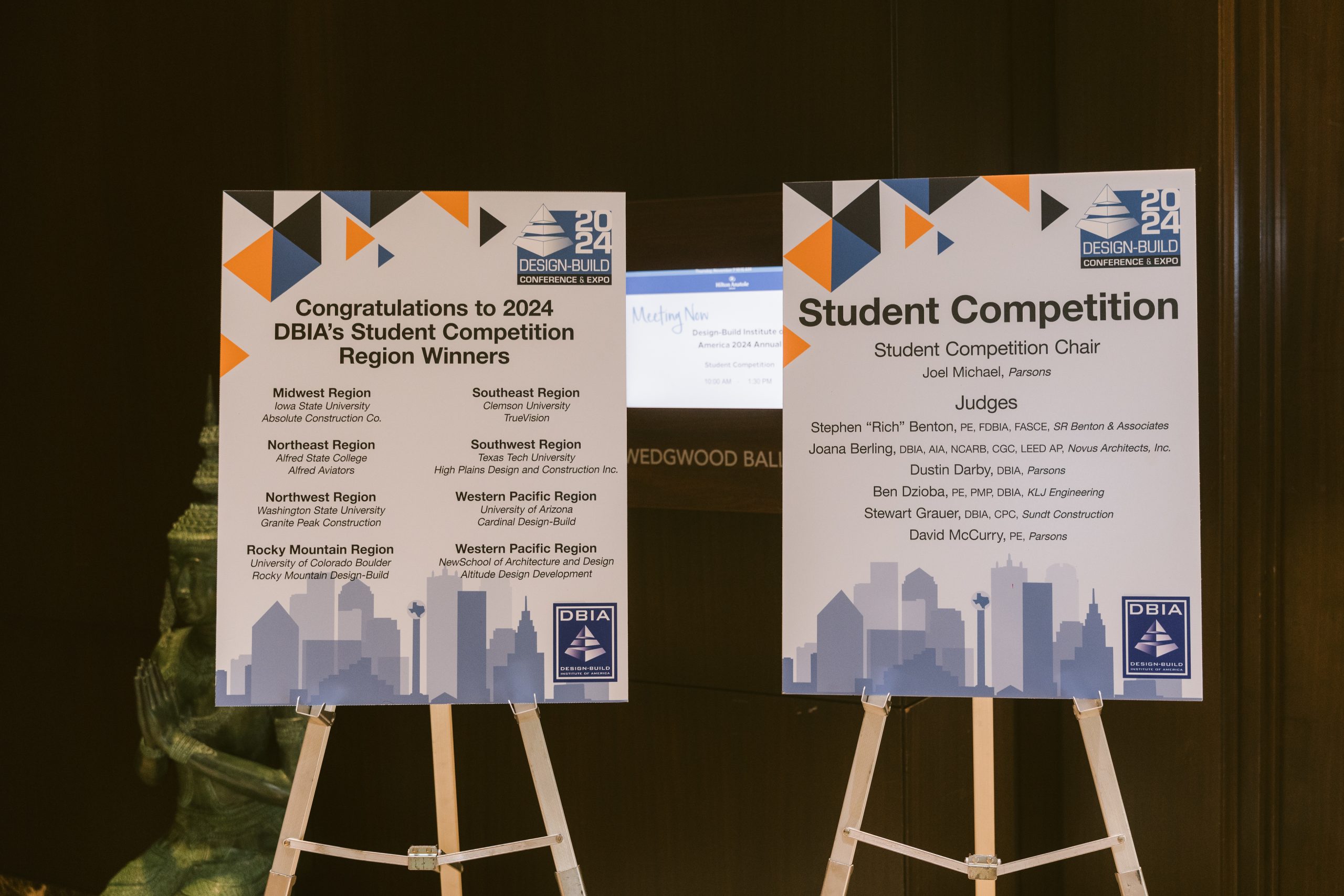

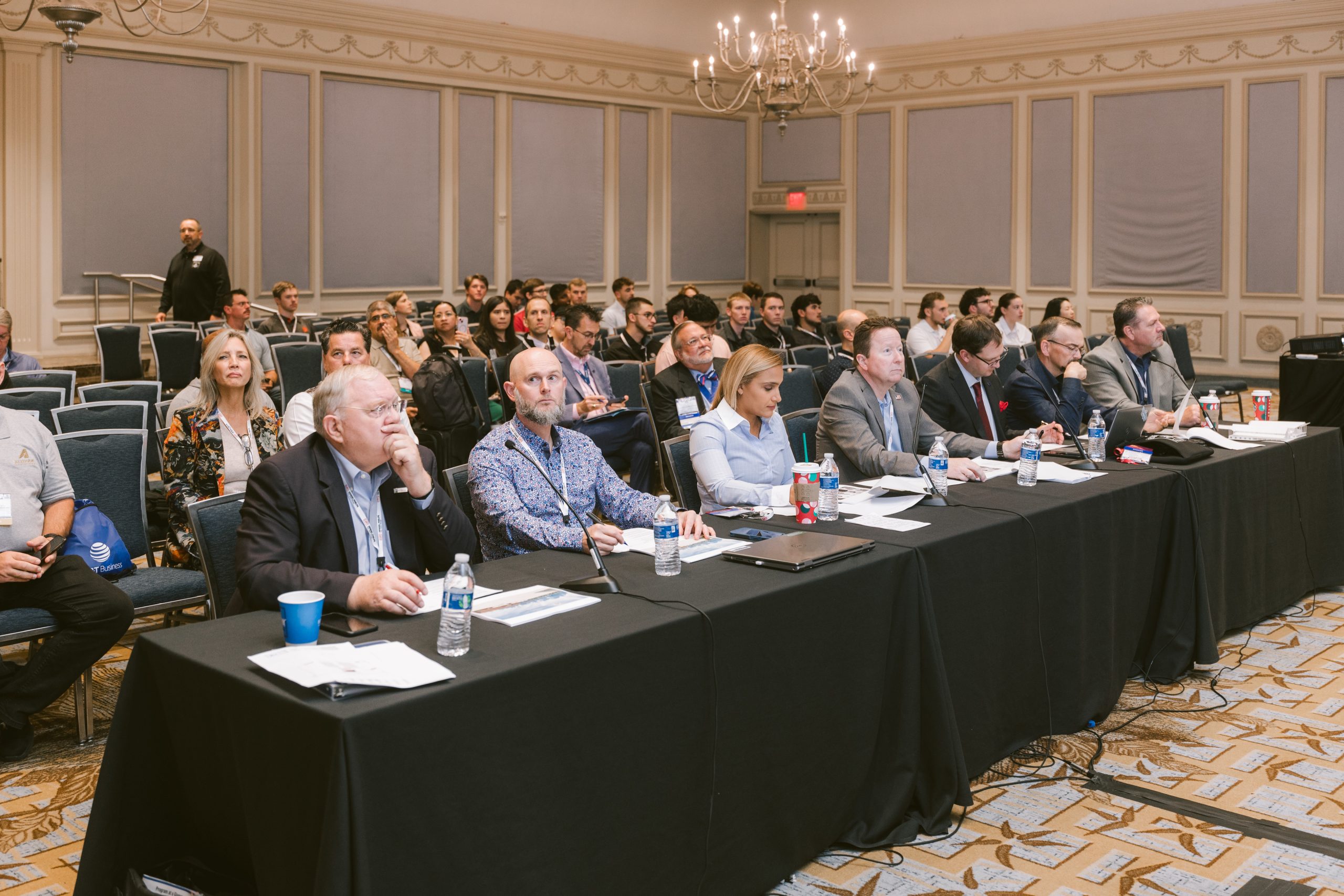


Breaking New Ground with Parsons and HCSS
This year’s competition pushed participants further than ever, introducing innovations that mirrored evolving trends in the design-build industry. Parsons incorporated a fixed-price variable scope delivery mechanism, which Hasbrook explained gave students “the most amount of a project you can get for a set price, in this case $100 million.” This new criterion provided a nuanced challenge that required students to balance project scope, quality and budget within the constraints of a fixed price. “Using a design-build best practice of fixed-price variable scope, we also included the goal of maximizing the return on investment (ROI) for the airport in the design,” Hasbrook said. “So the students had to balance the number of gates with the number of concessions to net the biggest return to the airport authority’s investment.”
Another game-changer for the 2024 competition was the integration of HCSS HeavyBid software, a professional-grade platform for students to develop cost estimates and project budgets. With built-in tutorials, live workshops and 24/7 support, the platform guided students through the estimation process and gave them a valuable first look at industry-standard tools.
“Once I really did utilize the training videos, I realized that going from an Excel sheet to HeavyBid gave me everything I needed — not just with calculations but with their crews and tabs for resource use. It set up the whole process,” said Benjamin Hewitt, a member of Rocky Mountain Design-Build. The software’s structured approach freed teams to focus on refining their designs and preparing persuasive presentations, helping them connect the technical and creative aspects of their proposals.
Amanda Ayles, Software Product Manager at HCSS, praised the students’ adaptability. “We were blown away by how quickly they picked up HeavyBid and used it to communicate their vision,” she said. “The platform gave them structure, but they took it a step further, using it to tell a compelling story through their proposals.”
Beyond the Win

For Cardinal Design-Build, the victory represented more than just technical achievement. It was a moment to inspire change for the next generation in a traditionally male-dominated field. “I feel like even in classes these days, you’re still treated a little differently by your peers because you’re a girl,” said Balkan, a civil engineering major with an emphasis on construction. “But going up there as an all-girls team, it just shows how powerful we are and how confident we’ve become. We’ve worked past anything anyone might have thought less of us for, because that still happens sometimes. This win shows that we’re powerful, smart and fully capable of thriving in this industry.”
The team’s composition and their choice of pink attire were deliberate. Carruthers, a civil engineering major, said, “From the beginning, we decided our company would be woman-owned and we’d wear all pink for our presentation. When we won, just walking up there in all pink, it was a powerful moment for us. It felt like we were making a statement, and it was really cool.”
Building Real World Skills for the Future
While Cardinal Design-Build claimed the top spot, the competition highlighted exceptional talent across the board. The other finalists — University of Colorado Boulder and the NewSchool of Architecture and Design — delivered innovative and compelling proposals, demonstrating the incredible depth of skill and creativity in this year’s competition.
Katie Irvin, a member of Rocky Mountain Design-Build, reflected on the importance of teamwork and real-world experience. “One of the things I’m most proud of is our collaboration. It really takes a lot to put together a technical proposal that’s realistic and considers the design, schedule and budget,” she said. “We all had to work together closely. Understanding the front end of how projects are won and having that experience was super helpful.”
“This competition is about more than winning — it’s about preparing students for the realities of the design-build profession,” said Salvador Chairez, Senior Manager, Component Relations for DBIA. “Every team, from the qualifiers to the finalists, showcased the ingenuity and determination that will define the future of the AEC industry. Their presentations this year, as in every year, fill me with confidence for the future of design-build.”
A Big Year for the University of Arizona
This victory continues the University of Arizona’s legacy of excellence in DBIA’s competition, marking the school’s fourth consecutive top-three finish. It also caps off a milestone year for the university, as Arizona’s Applied Research Building was named DBIA’s Project of the Year during the Project/Team Awards Ceremony at the same conference. Together, these achievements underscore the school’s leadership in advancing design-build innovation both in the classroom and in the field.
Hear More from the Students
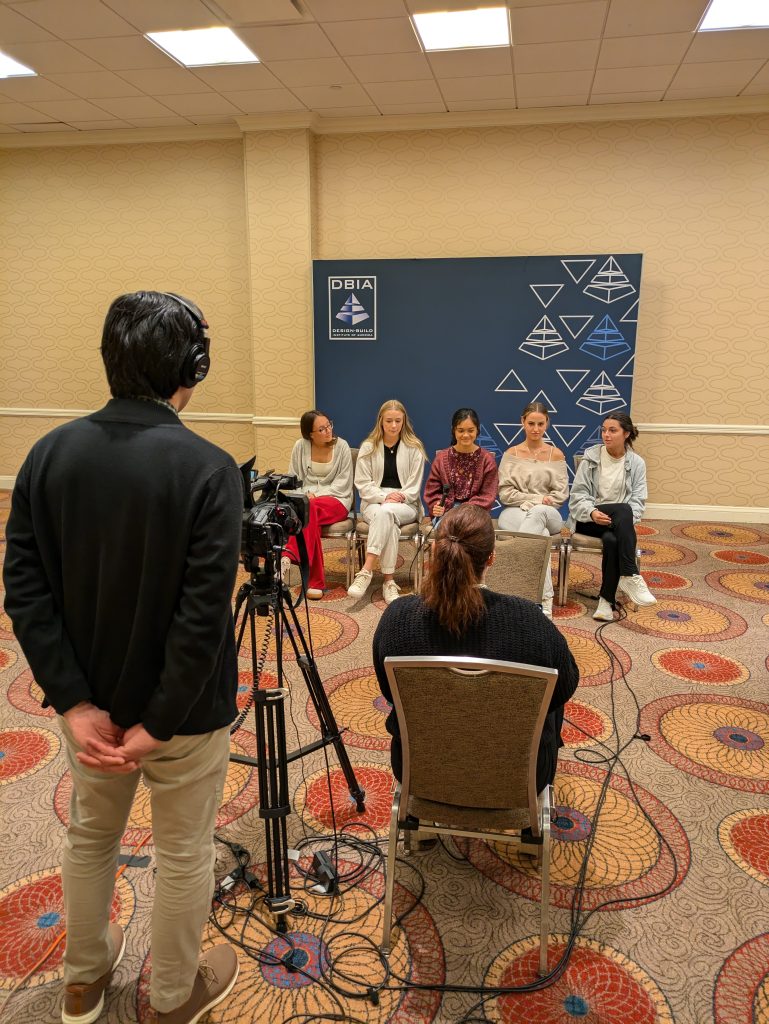
The competition may be over, but the conversation continues. The upcoming November episode of DBIA’s Design-Build Delivers Podcast, coming out just in time for your Thanksgiving travel listening, will feature exclusive interviews with all three finalist teams and Ayles from HCSS, exploring the challenges and triumphs of this year’s competition.
Learn more about DBIA’s Student Engagement programs.

